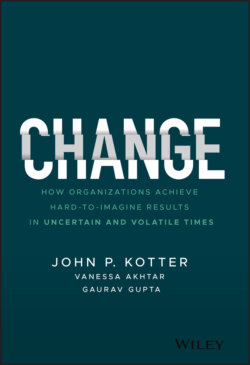Читать книгу Change - Gaurav Gupta - Страница 10
The Challenge: A More Volatile, Uncertain, and Rapidly Changing World
ОглавлениеFor centuries, the world has been speeding up, changing more and more often and in increasingly complicated ways. This trend has accelerated as we've moved from an Industrial Age to an Information Age.
Examples of this increased pace and complexity are easily found. The total number of patents granted by the United States Patent and Trademark Office doubled from 1960 to 1990. Then the number of patents quadrupled in the last three decades. While it took the telephone 75 years to reach 50 million users, cell phones took only 12 years, and the iPhone took just three to hit that milestone. A 2018 IBM study estimated that 90% of all data on the internet was produced in the immediately preceding two years.
The average tenure of companies on the S&P 500 in 1965 was 33 years. Today, it is half that. Reputational risks, though hard to quantify, have certainly increased with the growing use of social media, constant news alerts, and venues for publicly accessible employee feedback. Glassdoor has 32 million unique visitors each month. These examples are representative of changes that can be found in many different contexts.
The increased change around us drives an increased effort to change within the organizations that employ us, supply us with needed goods and services, and govern us. There are many variations of what this looks like by industry, sector, or region. But in general, the sheer number of organizational initiatives to produce change is now much larger than 30 years ago. Fifty years ago, virtually no organizations talked about changing their cultures, while today this is commonplace. The growing number of initiatives has led to more and more companies adopting formal project management offices (PMOs).
Source: Adapted from Ahir H, N Bloom, and H Furceri (2018) “World Uncertainty Index”, Stanford mimeo. The WUI is computed by counting the percent of the word “uncertain” (or its variants) in the Economist Intelligence Unit country reports.
Along with, and directly related to, the increase in the pace and complexity of change, the last two decades have seen a steep increase in the level of uncertainty. Complex change does that. The high level of economic and political uncertainty can make it difficult to know what initiatives will be necessary to stay competitive and to take advantage of new opportunities.
Unfortunately, as we will see in the examples laid out in this book, the internal change in organizations is not keeping pace with external change and volatility. This challenge affects everything: the quality and availability of health care; the stock market; the environment; the affordability of products that make life easier, more interesting, or more fun; the economy; the responsiveness of government; poverty; our ability to deal with medical emergencies, including pandemics; how many of us will lead comfortable and satisfying lives; even how many of us will die needlessly. The list is endless.
